PAÑJĀ SĀHIB, GURDWĀRĀ
From: Encyclopaedia of Sikhism.
PAÑJĀ SĀHIB, GURDWĀRĀ, at Hasan Abdāl (33º -48'N, 72º -44'E) in Attock (or Campbellpore) district of West Punjab, is sacred to Gurū Nānak, who briefly stopped here on his way back to the Punjab from his western udāsī or journey which took him as far West as Mecca and Baghdād. According to tradition popularized by Bhāī Santokh Siṅgh, Srī Gurū Nānak Prakāsh, Gurū Nānak and his Muslim companion of long travels, Mardānā, halted at the foot of a hill. On the top of the hill lived a Muslim recluse known in those parts as Walī Kandhārī. Feeling fatigued and thirsty and seeing no water in the vicinity, Mardānā climbed up to the Walī's hut and begged him for water to quench his thirst. Questioned as to who he was and what had brought him to that place, Mardānā said that he was professionally a musician and had come in the train of a great saint, Bābā Nānak. Walī Kandhārī refused to give him water and quipped instead that if his master was so accomplished a saint, he should not let his follower go thirsty. Mardānā walked back disappointed and told the Gurū what the Walī had said. Gurū Nānak asked Mardānā to go once again and supplicate the Walī with humility. Mardānā obeyed, but returned only to report the failure of his mission. Gurū Nānak there upon touched the hillside with the tip of the stick he was holding. Instantly, water spouted forth from that point and Mardānā drank his fill. But simultaneously Walī Kandhārī's reservoir on top of the hill began to ebb and soon dried up. The Walī, blind with rage, rolled down a big boulder towards the travellers. Gurū Nānak gently raised his arm and the rocky mass, as goes the tradition, stopped in its downward career as it came in touch with his palm, (pañjā, ਪੰਜਾ in Punjabi). The impression of his palm was left on the stone which is still shown the visitors to the place, now famous as Pañjā Sāhib, the Holy Palm.
A gurdwārā was built at the site during the reign of Mahārājā Raṇjīt Siṅgh to which he made a handsome land endowment and which he visited more than once during his lifetime. Gurdwārā Pañjā Sāhib, as it came to be called, was administered by a line of mahants until Jathedār Kartār Siṅgh Jhabbar, at the head of a 25-strong jathā or band of Akālī reformers, occupied it on behalf of the Shiromaṇī Gurdwārā Parbandhak Committee on 17-18 November 1920. The Gurdwārā gained further prominence during 1922 when the local saṅgat led by Bhāī Pratāp Siṅgh, treasurer of Srī Pañjā Sāhib Gurdwārā Managing Committee, sought to halt a train carrying prisoners of the Gurū kā Bāgh agitation to Attock jail in order to serve meals to them. As the railway authorities refused to make an unscheduled wayside halt, several Sikhs, with Bhāī Pratāp Siṅgh and Karam Siṅgh (a pilgrim from Anandpur Sāhib) at their head, squatted on the railway track. The train, finding its warning whistles ineffective, screeched to a halt but not before crushing Bhāī Pratāp Siṅgh and Karam Siṅgh to death and wounding five others. This tragedy which took place on 30 October 1922 attracted streams of pilgrims, and funds began collecting for raising a larger building. Construction of the new sarovar or sacred pool began on 14 October 1932 with ceremonies presided over by Ṭikkā (later Mahārājā) Yādavinder Siṅgh of the princely state of Paṭiālā, which event is commemorated in a slab-inscription. On the same day, the cornerstone of the new building of Srī Harimandar Sāhib in the middle of the sarovar was laid by Pañj Piāre, the Five Elect, Bhāī Raṇdhīr Siṅgh, Bābā Vasākhā Siṅgh, Bābā Nidhān Siṅgh, Bhāī Jodh Siṅgh and Sant Budh Siṅgh. Besides the daily services, largely attended religious assemblies were held in October to commemorate the martyrs of the 1922 tragedy and in April to celebrate Baisākhī until the place had to be abandoned at the time of mass migrations caused by Partition in 1947. However, Gurdwārā Pañjā Sāhib is one the few Sikh shrines in Pakistan which pilgrims from India may still visit in groups on special occasions with the prior permission of the Government of Pakistan.
BIBLIOGRAPHY
- 1. Giān Siṅgh, Giānī, Twārīkh Gurū Khālsā [Reprint]. Patiala , 1970
- 2. Santokh Siṅgh, Bhāī, Srī Gur Pratāp Sūraj Granth. Amritsar , 1927-35
- 3. Thākar Siṅgh, Srī Gurduāre Darshan. Amritsar , 1923
- 4. Narotam, Tārā Siṅgh, Srī Gurū Tīrath Saṅgrahi. Kankhal,1975
- 5. Mehar Singh, Sikh Shrines in India . Delhi , 1975
- 6. Khan Mohammad Waliullah Khan, Sikh Shrines in West Pakistan . Karachi , 1962
- 7. Sahi, J.S., Sikh Shrines in India and Abroad. Faridabad , 1978
[Source: Encyclopaedia of Sikhism. Punjabi University . 2006
Pictures by Amarjit Chandan. December 2009
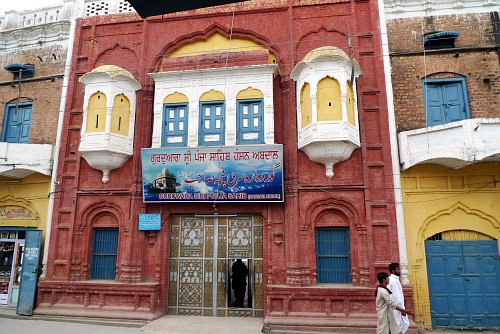
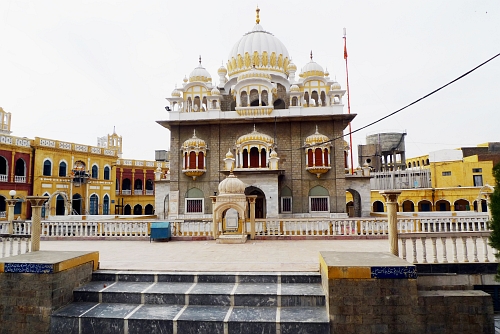
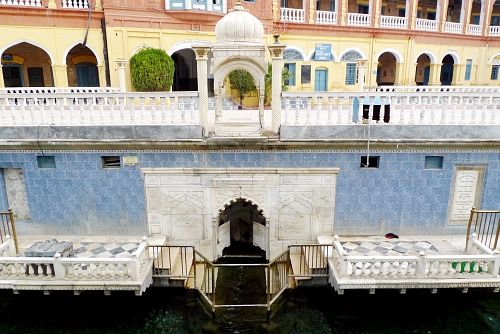
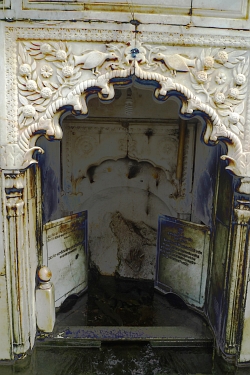

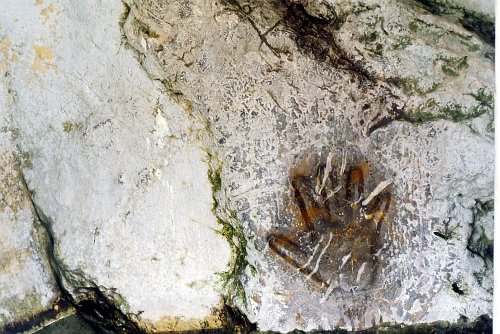

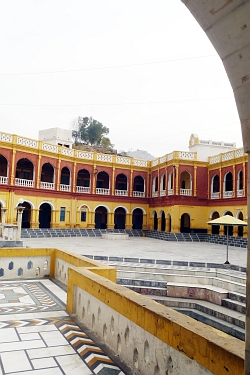

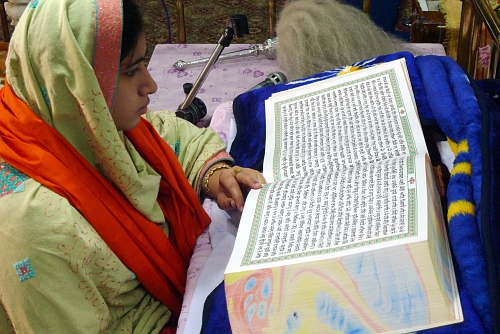
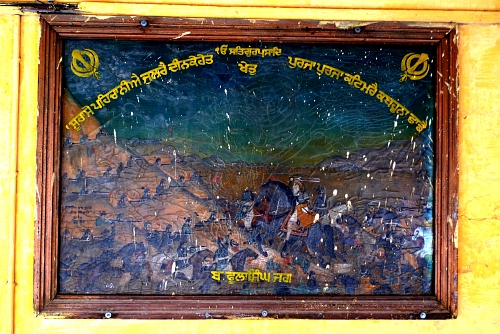
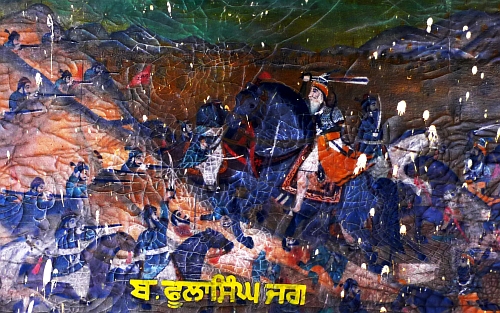
A damaged oil painting in the corridor of Panja Sahib Gurdwara showing Sikh army commander Phula Singh Akali (1761-1823). Signed: Hira Singh Jawaddi Ludhiana. 23. 8.1939. Photo No. 7. All other 'photos' 1 to 6 are missing. The painter could have done at least 10 oils. The Bhai – priest – of the gurdwara had no clue.